- Parents:
-
Henry Harold Harrison
(1886–1973) -
Agnes Durie
(1885–1971) - Siblings:
-
Henry Harold Harrison
(1911–1974) -
John Durie Harrison
(1913–1986) -
Gordon Harrison
(1914–2005) -
Audrey Harrison
(1922–2015) - Married (February 6th, 1946):
-
Angela Bobowsky
(1914–2015) - Children:
-
Susan Angela Ann Harrison
(1948–2013)
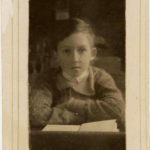
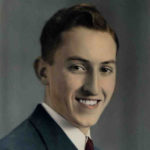
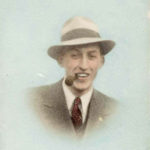
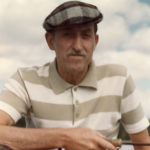
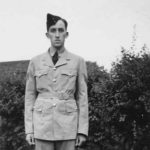
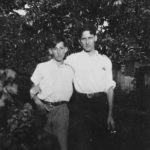
Biography
Douglas Harrison was born on 1 July 1919 at 113 Gledhill Ave, East York, Toronto. He was the fourth son of Henry Harold Harrison and Agnes Durie, who had immigrated from England and Scotland a dozen years earlier. Doug’s father was building the house at 113 Gledhill at the time, and Doug was born in the basement where the family was temporarily living.
As a boy, Doug attended Danforth Park Public School. He developed a lifelong passion for chemistry at an early age and would conduct experiments in the family basement on Gledhill. One day, he and a friend accidentally blew up a drain with home-made nitroglycerine. From Danforth Park, Doug went on to East York Collegiate where he played centre on the football team and met Ches Bain and Ken Bradshaw, who would become his lifelong friends.
The 1930s were depression years, and Doug’s father had a difficult time finding work as a carpenter. Doug recalled working with his father to make wooden jigsaw puzzles that they would sell to shops along the Danforth to earn money. The family became unable to meet its mortgage payments, but the mortgage holder was kind enough to let them stay on in the house for a couple of years until Doug’s eldest brother, Hank, could afford to buy the house back.
In February 1939, Doug dropped out of high school after only partially completing his “Senior Matric” (as Grade 13 was known in those days). He got a job with WJ Gage & Co. at their book manufacturing factory on Spadina Ave where he worked in the book binding area.
On 31 March 1939, he met his future wife at a dance at the Palais Royale. In February 1940, Doug left Gage and went to Connaught Laboratories at College St and University Ave where he worked as a bacteriology and lab technician. On 9 October 1940, Doug enlisted in the Canadian Armed Forces Reserves, Irish Regiment, with the rank of private. As a reservist, Doug continued to live with his family at 113 Gledhill Avenue and work at Connaught Laboratories. In May 1941, he took a job at British American Oil’s refinery on the waterfront in Toronto’s east end where he also worked as a lab technician. On 2 October 1941, he was called up for full-time service under the National Resources Mobilization Act. He completed basic training in Newmarket and was stationed in Camp Borden.
In June 1942, Doug enlisted in the Canadian Army Medical Corps and completed a three-month course to qualify as a “Lab Technician A” at Camp Borden Military Hospital. He was promoted to the rank of corporal. In April 1943, he was transferred to Prince Rupert Military Hospital where he spent a year working in the lab. In May 1944, during the Battle of Britain, he was shipped to the United Kingdom and reported for duty at the No. 23 Canadian General Hospital at Leavesden near Watford. He was later transferred to Antwerp where he was assigned to help establish a military hospital.
In January 1946, Doug’s overseas service was terminated, and he was shipped back to Canada and given disembarkation leave. Nine days after arriving home, he married his sweetheart at St. Andrews United Church in Niagara Falls, Ontario. He was a shy young man who eschewed “a big wedding.” The couple honeymooned at Tally Ho ski lodge near Huntsville. While there, they travelled to North Bay to have their wedding photograph taken.
In March 1946, Doug was discharged from the army with the rank of Quartermaster Sergeant. In April 1946, he was awarded an Oak Leaf medal by the Department of National Defence in recognition of “gallant and distinguished service” while serving in the army. Doug, who never spoke much about the war, would only say he won the medal for “saving the most Spam cans.”
Doug and his wife settled in an apartment at 747 Pape Avenue, Doug decided to attend university and from May to August 1946 completed his “Senior Matric” at the Ontario Training & Reestablishment Institute in order to qualify for university admission. In the fall of 1946, he entered the University of Toronto, Chemical Engineering program. In December of that year, their son was born. Their daughter was born a year later and the family moved into a larger apartment in the same building at 743 Pape Avenue. During the four years that Doug attended university, his wife worked from home retouching negatives and colouring black and white prints. Doug held summer jobs in 1947 at Johns Manville Co. on Bay Street where his father got him work as a labourer, and in 1948 at McCall-Frontenac Oil Company where he worked as a lab technician. The family had very little money during those years.
In June 1950, Doug graduated with his Chemical Engineering degree. He was hired by the Ontario Hydro Electric Power Commission, Research Division as a research engineer. The Research Division was located on Strachan Ave in 1950 and later moved to Kipling Ave when the Strachan Ave building was demolished to make way for the Gardiner Expressway. Doug worked at Ontario Hydro for his entire 34-year professional career, eventually holding the positions of Supervising Engineer, Environmental and Inorganic Research, and Manager, Chemical Research Department. Doug worked on a wide range of activities and projects during his time at Ontario Hydro; one of his most notable achievements was leading a team that developed the limestone scrubber for the removal of sulphur oxides from the emissions of coal-fired generating stations. He authored or co-authored a dozen technical papers during his Hydro career, mainly on the subject of sulphur dioxide pollution and flue gas desulphurization using a limestone slurry. An article published by Doug in a Research Division 1984 Newsletter captures some of the personal moments of his Hydro career.
Once Doug was in full time employment, the family emerged from financial hardship and gradually became better off. In the early 1950s, the family bought their first car. By 1956, they had saved enough money to buy a 1000 square foot bungalow in North York, which became the family home for the next fifty years. By this time, the family had such amenities as forced-air central heating, a refrigerator, and a black and white television set.
In the 1950s, the family vacations were mainly spent at the cottage of Doug’s sister-in-law, Olie Magid, a cottage Doug helped build at Paradise Beach on the south side of Lake Simcoe. From around 1960, the family spent two weeks every summer at Northern Pines Camp in Restoule, Ontario near North Bay. Doug loved to fish and would spend patient hours trolling Lake Restoule for lake trout.
Throughout his adulthood, Doug stayed close to his parents and siblings. He visited his parents regularly until they passed away in the early 1970s. Doug’s siblings and their children were regular visitors and good friends. Christmas dinner was with brother Hank and his family every year until the children grew up.
The children left home in the late 1960s, and Doug and his wife became “empty nesters.” In the 1970s, they became grandparents and enjoyed spending time with their grandchildren. Doug retired from Ontario Hydro at age 65 in July 1984. He began spending time at a trade he had first learned from his father: woodworking. He took great pleasure in making tables, cabinets, and other pieces of furniture as his father had done. He was a perfectionist who laboured to make his work flawless. After the children left home, Doug and his wife also began travelling more widely. They took numerous trips to Europe, cruised the Nile, visited family living abroad in North Africa and the Middle East, and drove across Canada. In their later years, they travelled regularly to Cuba where they made many friends.
During his adult life, Doug was not in the best of health. From the 1980s, he swam regularly for exercise. However, he smoked a pipe and cigarettes for many years and took up his pipe again in retirement. He had developed a chronic skin rash during the war that stayed with him for twenty years. In the 1980s, he was diagnosed with celiac disease, an allergy to gluten, and thereafter had to forego eating foods that contained wheat. In the spring of 1994, he suffered a mild heart attack. Later that year, he was diagnosed with non-Hodgkin’s lymphoma. He died on 16 November 1994 of complications from that cancer. He is buried in York Cemetery in Toronto.
Doug’s niece spoke at his funeral and very eloquently captured something of his character.
Research Notes
Doug used to tell the story of one of his co-workers at WJ Gage & Co. who was instructed to fetch a bucket of steam and spent quite some time looking for one.
Doug was a pragmatic man, as befits an engineer. He considered the notions of psychics and spiritualists as so much nonsense. Alas, he was belied by the continued presence of his spirit at the family home in North York where he made all sorts of knocking noises, fiddled with the lights, and tripped the alarm system on a regular basis.
Source Documents
Details
-
Education:
1933, East York, Toronto;
Entered East York Collegiate.
-
Education:
1938-06, East York, Toronto;
Completed high school at Danforth Park Public School.
-
Courtship:
1939-03-31, Palais Royal, Sunnyside, Toronto;
Met Aniela Bobbs.
Aniela Bobbs, AKA Nellie Bobowska.
- Employment: 1939, Toronto, Ontario; Lab Tech at Connaught Laboratories.
- Military Service: 1940-10-09, East York, Toronto; Joined Canadian Armed Forces Reserve, Irish Regiment.
-
Military Service:
1941-10-02, Camp Borden, Ontario;
Called up for Active Duty.
Completed basic training in Newmarket, stationed at Camp Borden.
- Burial: 1994-11-19, York Cemetery, Toronto;